This article was co-authored by wikiHow Staff. Our trained team of editors and researchers validate articles for accuracy and comprehensiveness. wikiHow's Content Management Team carefully monitors the work from our editorial staff to ensure that each article is backed by trusted research and meets our high quality standards.
There are 9 references cited in this article, which can be found at the bottom of the page.
This article has been viewed 62,351 times.
Learn more...
Preventing juvenile delinquency can help improve the quality of life for kids, make communities safer, and even boost the economy. Before you can work to prevent juvenile delinquency, you'll need to identify which kids are most at risk. As a parent, teacher, or friend, you can review the risk factors that might cause delinquency later on. Social workers and teachers can set up interventions with at-risk kids' families, their schools, and their communities.
Steps
Identifying Risk Factors for Delinquency
-
1Consider a history of abuse. Children who are mentally or physically abused, especially before the age of 5, are more likely to develop delinquent behavior later in the life. If you know a child who has suffered this type of abuse, make an appointment for them to see a mental health professional as early as possible.[1]
-
2Look for antisocial or uninhibited behavior in young kids. If you notice that a child as young as 3 or 4 doesn't want to play with other kids or interact with family members over a long period of time, they might be at risk for juvenile delinquency later.[2]
- If a kid is approaching adolescence - around age 12 - some withdrawal from family members is normal. But if they never interact with others and get agitated when you suggest they do, that behavior might be a problem.
Advertisement -
3Check for signs of hyperactivity. If a child exhibits signs of hyperactivity, they might be at greater risk for juvenile delinquency later. Kids who talk almost constantly and rapidly, can't stay still even when seated, and seem overly clumsy in their movements might be hyperactive.[3]
- If you think your child might be hyperactive, make an appointment with their pediatrician. They can confirm the diagnosis or refer you to a specialist and help get your child the treatment they need. If you are not the child's parent, suggest to their parent that they may want to have their child evaluated.
-
4Study the kid's home and family environment. Family dynamics and history are the most obvious risk factors for juvenile delinquency. Likewise, living in areas with high crime and/or poverty rates increases the likelihood of delinquency. If you know children who are impacted by these environmental factors, target them for intervention.[4]
- If anyone in the family - particularly a parent or older sibling - was a juvenile delinquent, children are more likely to be, too.
- If parents aren't home often, and children don't have adequate or regular supervision, the risk for juvenile delinquency rises.
-
5Find out who their friends are. Even if kids aren't susceptible to other risk factors, who they hang out with can put them at risk of delinquency. If their friends are anti-social or already engaged in delinquent behavior, kids are more likely to develop that behavior, too.[5]
-
6Look into the kid's school performance. There are a lot of reasons that kids might not do very well at school. But if there are no other explanations, like a learning disability, poor school performance can indicate delinquency is a risk.[6]
Using Family Interventions
-
1Intervene with at-risk parents early and often. Because family dynamics are such a huge factor, intervening with parents as early as possible can help prevent delinquency. Community programs that have nurses and social workers check in with new mothers and infants up to once a week can help encourage better oversight of children and prevent delinquency.[7]
-
2Encourage kids to speak with their parents. If kids feel like they can talk to their parents about their home lives or things that are bothering them, they might be less likely to become delinquent. Community and school programs that provide a neutral environment and a mediator for those conversations can help improve family dynamics and reduce delinquency.[8]
- If you are a parent that suspects your child might become delinquent, encourage them to talk to you by asking them about their day and their friends. The more open you are with your kids, the more likely they are to be open with you.
-
3Make shared activities for parents and kids available. The healthier a kid's relationship with their parents, the less likely they are to become delinquent. Schools and communities can set up activities that kids and their parents can participate in together. It provides a shared experience, and gives kids the chance to interact with their parents in a positive way.[9]
- For example, some communities have child-parent swimming lessons and art activities.
- If you're a parent and your community offers shared activities, try to attend them regularly with your kids.
-
4Look for a supportive family member. If a child feels listened to and supported at home, they're less likely to become delinquent. An adult family member, whether it's a parent, older sibling, aunt, uncle, or grandparent, that acts as an ally and sounding board can keep kids from turning to delinquency.[10]
- School counselors or social workers can work with kids to identify adults in their lives they can rely on. It might then be helpful for the counselor or social worker to meet with that adult and explain the importance of such a relationship.
-
5Set the child up in a mentoring program. If the child doesn't have a family member who can provide support and encouragement, set them up with a mentor from outside the family. Programs like the Big Brothers Big Sisters of America program are great places to find these types of mentors.
- If you are a parent and work quite a lot, you can sign your child up yourself. This way, you know your kids are getting positive interaction with another adult, even when you can't be there.
Creating Stable and Safe Environments
-
1Prevent bullying in schools. If you are a school administrator, meet with your faculty and stuff to cover what bullying is, what the school's bullying policy is, and what the consequences are to help everyone identify and prevent bullying. Ask to have more staff present in the hallways, and encourage teachers to address bullying in their own classrooms as soon as they see it. You can also encourage students to speak to a teacher or counselor they trust if they're being bullied.[11]
- If you are a parent that's concerned about the atmosphere in your child's school, ask to meet with a school administrator or go to your district's next school board meeting and share your concerns.
-
2Encourage participation in school-sanctioned activities. If kids are involved in healthy and safe school-sanctioned activities, they're less likely to drop out of school or become involved in unhealthy relationships. Ask the child what their interests are and help them find a school activity that matches those interests.
- For example, if they like movies, encourage them audition for a play or get involved with the drama club. If they like music, the band or choir can be a good choice.
- If cost prevents some students from participating in such activities, look into establishing a scholarship fund that covers some or all of the cost for those activities.[12]
-
3Establish community activities for kids. Some schools can't afford to offer a lot of sports or activities. If that's the case, work with the community to provide activities for kids. Talk to the city about converting an empty lot into a community park. Talk to leaders at the community center about setting up free activities like dance, yoga, or art classes.[13]
-
4Encourage kids to participate in community development. The more invested kids feel in their own communities, the less likely they are to become delinquent within those communities. Designate a spot on community boards for a youth representative. You can also set up a youth committee, which is responsible for coming up with ideas to include and serve youth in the community.[14]
References
- ↑ https://www.ncbi.nlm.nih.gov/pmc/articles/PMC2771618/
- ↑ https://fosteringperspectives.org/fpv18n2/tips.htm
- ↑ https://youth.gov/youth-topics/juvenile-justice/risk-and-protective-factors
- ↑ https://www.ojp.gov/pdffiles1/ojjdp/frd030127.pdf
- ↑ http://www.un.org/esa/socdev/unyin/documents/ch07.pdf
- ↑ https://youth.gov/youth-topics/juvenile-justice/risk-and-protective-factors
- ↑ https://www.nap.edu/read/9747/chapter/6#119
- ↑ https://www.impactlaw.com/criminal-law/juvenile/prevention
- ↑ https://youth.gov/youth-topics/juvenile-justice/risk-and-protective-factors
About This Article
To prevent a child from juvenile delinquency, check for risk factors, like a history of abuse, anti-social behavior, and poor grades. If you see one of more of these factors, try to intervene and speak with the child’s parents as soon as possible. Encourage them to speak with their child, since kids are less likely to become delinquent when they’re allowed to talk about their feelings. Consider researching community and school programs that will offer a neutral environment to help facilitate conversations between the child and their parents. If the child doesn’t have a family member who can provide support and encouragement, try to set them up with a mentor from a program like Big Brothers Big Sisters of America. For more help, including how to create a safe and stable environment for children, read on.
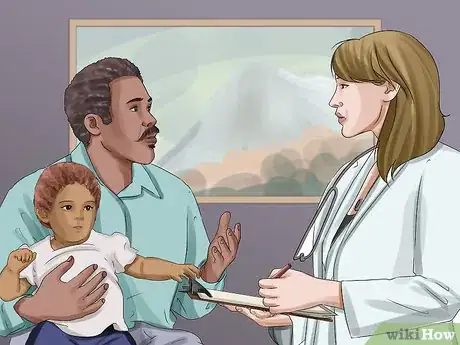
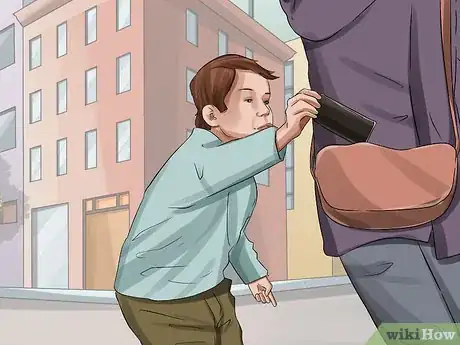

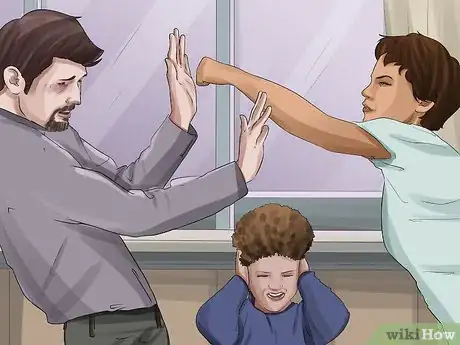
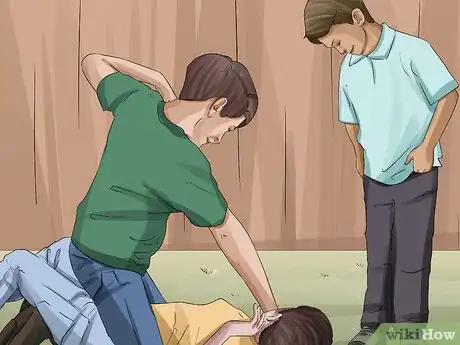



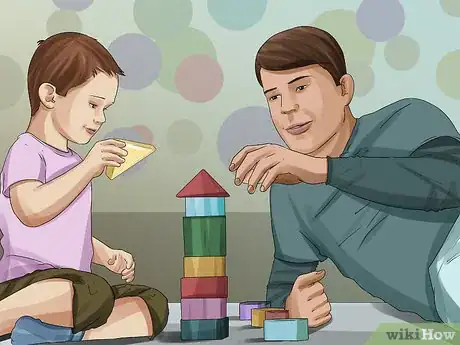


































































Medical Disclaimer
The content of this article is not intended to be a substitute for professional medical advice, examination, diagnosis, or treatment. You should always contact your doctor or other qualified healthcare professional before starting, changing, or stopping any kind of health treatment.
Read More...